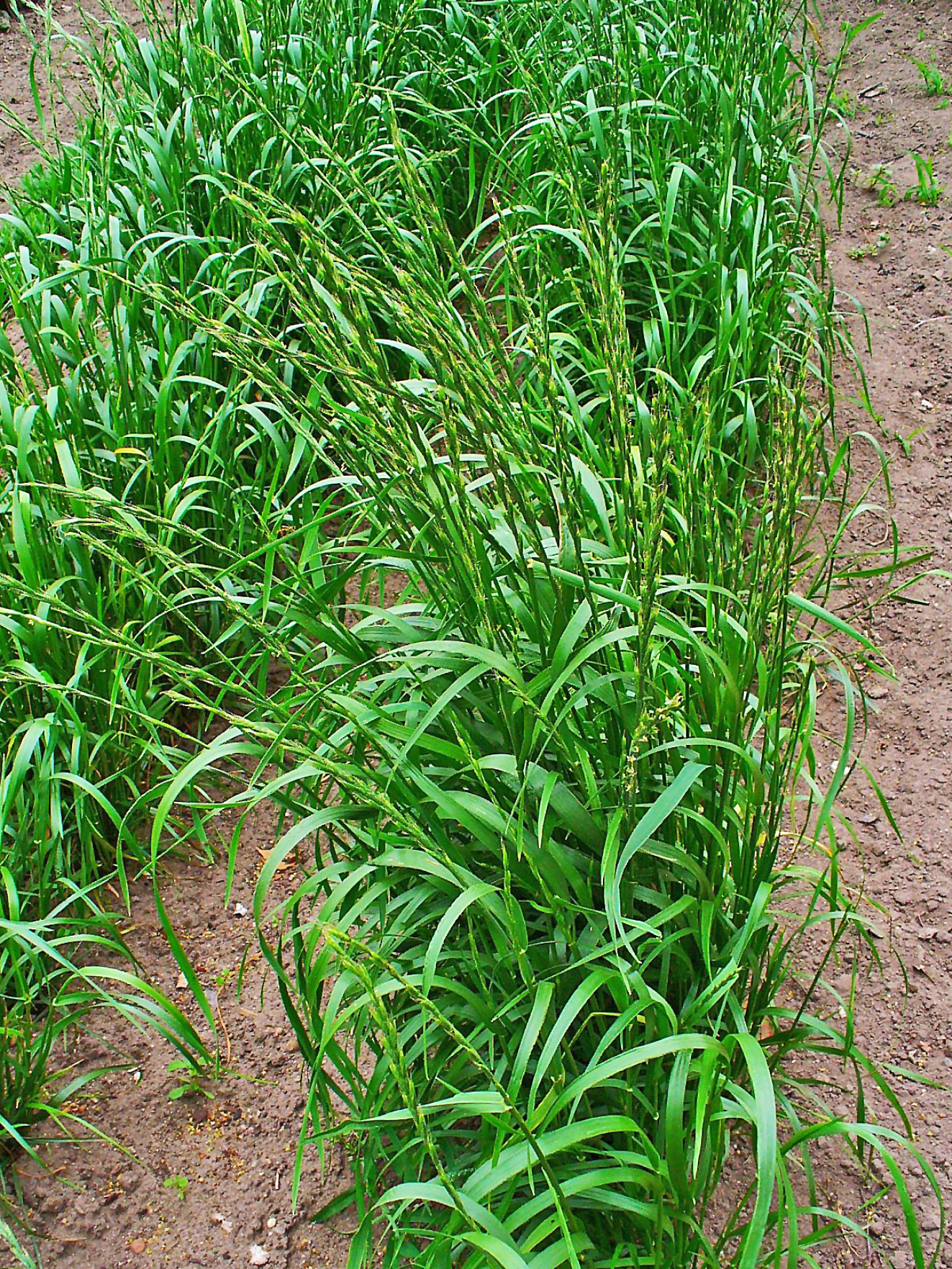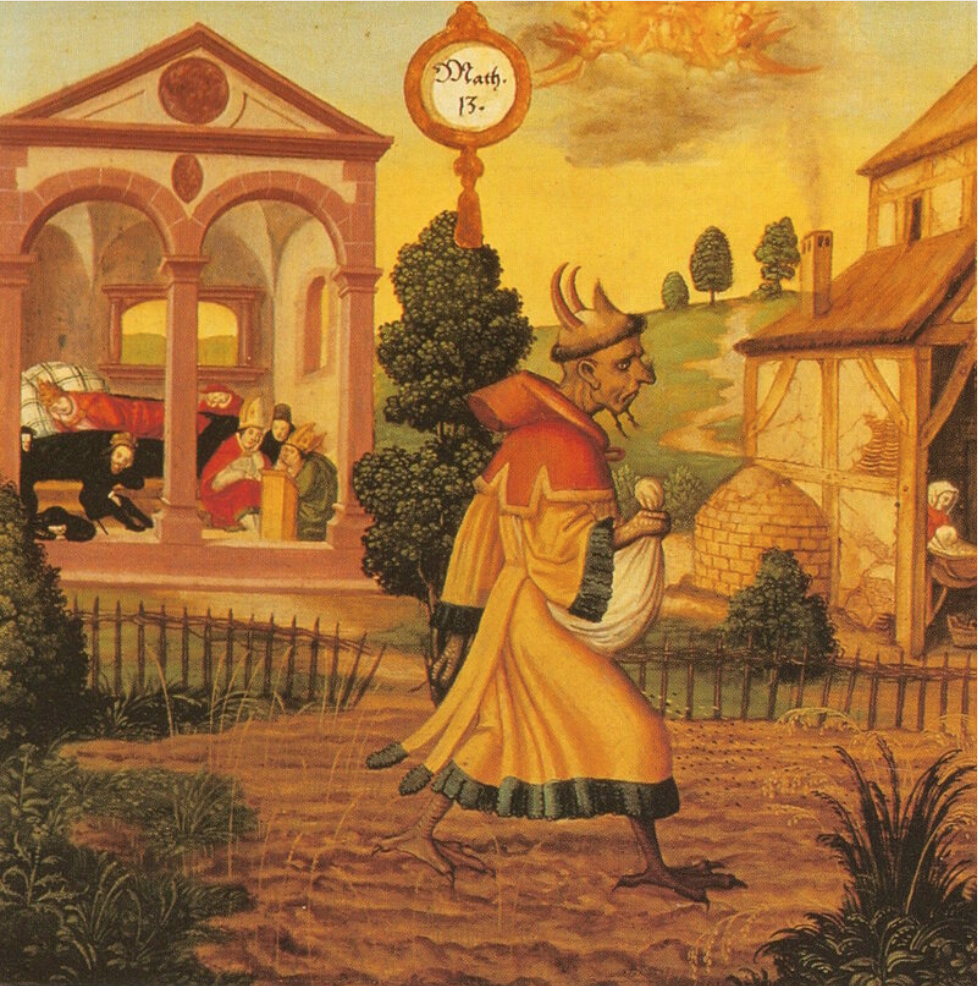Lolium temulentum on:
[Wikipedia]
[Google]
[Amazon]
''Lolium temulentum'', typically known as darnel, poison darnel, darnel ryegrass or cockle, is an annual plant of the genus '' Lolium'' within the family Poaceae. The plant stem can grow up to one meter tall, with
 Darnel usually grows in the same production zones as
Darnel usually grows in the same production zones as
 The ancient Greek botanist
The ancient Greek botanist
"Wheat’s Evil Twin Has Been Intoxicating Humans For Centuries"
inflorescence
An inflorescence is a group or cluster of flowers arranged on a Plant stem, stem that is composed of a main branch or a complicated arrangement of branches. Morphology (biology), Morphologically, it is the modified part of the shoot of sperma ...
in the ears and purple grain. It has a Cosmopolitan distribution.
Growth
wheat
Wheat is a grass widely cultivated for its seed, a cereal grain that is a worldwide staple food. The many species of wheat together make up the genus ''Triticum'' ; the most widely grown is common wheat (''T. aestivum''). The archaeologi ...
and was a serious weed
A weed is a plant considered undesirable in a particular situation, "a plant in the wrong place", or a plant growing where it is not wanted.Harlan, J. R., & deWet, J. M. (1965). Some thoughts about weeds. ''Economic botany'', ''19''(1), 16-24. ...
of cultivation until modern sorting machinery enabled darnel seeds to be separated efficiently from seed wheat. The similarity between these two plants is so great that in some regions, darnel is referred to as "false wheat". It bears a close resemblance to wheat until the ear appears. The spikes of ''L. temulentum'' are more slender than those of wheat. The spikelets are oriented edgeways to the rachis
In biology, a rachis (from the grc, ῥάχις [], "backbone, spine") is a main axis or "shaft".
In zoology and microbiology
In vertebrates, ''rachis'' can refer to the series of articulated vertebrae, which encase the spinal cord. In this c ...
and have only a single glume
In botany, a glume is a bract (leaf-like structure) below a spikelet in the inflorescence (flower cluster) of grasses (Poaceae) or the flowers of sedges (Cyperaceae). There are two other types of bracts in the spikelets of grasses: the lemma and ...
, while those of wheat are oriented with the flat side to the rachis and have two glumes. Wheat will appear brown when ripe, whereas darnel is black.
Darnel can be infected by an endophytic
An endophyte is an endosymbiont, often a bacterium or fungus, that lives within a plant for at least part of its life cycle without causing apparent disease. Endophytes are ubiquitous and have been found in all species of plants studied to date; h ...
fungus
A fungus ( : fungi or funguses) is any member of the group of eukaryotic organisms that includes microorganisms such as yeasts and molds, as well as the more familiar mushrooms. These organisms are classified as a kingdom, separately from t ...
of the genus ''Neotyphodium
''Neotyphodium'' is a genus of endophytic fungi symbiotic with grasses. It used to contain a number of asexually reproducing species that colonize the leaves of cool-season grasses, but most of them, including the type species '' N. coenophial ...
'' and the endophyte-produced, insecticidal loline alkaloid
A loline alkaloid is a member of the 1-aminopyrrolizidines (often referred to as lolines), which are bioactive natural products with several distinct biological and chemical features. The lolines are insecticidal and insect-deterrent compounds th ...
s were first isolated from this plant.
The French word for darnel is ''ivraie'' (from Latin ''ebriacus'', intoxicated), which expresses the drunken nausea from eating the infected plant, which can be fatal. The French name echoes the scientific name, Latin ''temulentus'' "drunk."
Literary references
 The ancient Greek botanist
The ancient Greek botanist Theophrastus
Theophrastus (; grc-gre, Θεόφραστος ; c. 371c. 287 BC), a Greek philosopher and the successor to Aristotle in the Peripatetic school. He was a native of Eresos in Lesbos.Gavin Hardy and Laurence Totelin, ''Ancient Botany'', Routle ...
stated in his ''De causis plantarum'' (8:7 §1) that wheat can transform
Transform may refer to:
Arts and entertainment
* Transform (scratch), a type of scratch used by turntablists
* ''Transform'' (Alva Noto album), 2001
* ''Transform'' (Howard Jones album) or the title song, 2019
* ''Transform'' (Powerman 5000 album ...
(''metaballein'') into darnel (''aira''), since fields sown to wheat are often darnel when reaped.
* Darnel is mentioned in Horace's Satire 2.6 (eaten by the Country mouse while he serves his guest fancier foods)
* Darnel may have been the plant in the Parable of the Tares
The Parable of the Tares or Weeds (KJV: ''tares'', WNT: ''darnel'', DRB: ''cockle'') is a parable of Jesus which appears in . The parable relates how servants eager to pull up weeds were warned that in so doing they would root out the wheat as w ...
in the Gospel of Matthew
The Gospel of Matthew), or simply Matthew. It is most commonly abbreviated as "Matt." is the first book of the New Testament of the Bible and one of the three synoptic Gospels. It tells how Israel's Messiah, Jesus, comes to his people and form ...
:
* In ordering the St. Brice's Day massacre of all the Danes in England, Æthelred the Unready
Æthelred II ( ang, Æþelræd, ;Different spellings of this king’s name most commonly found in modern texts are "Ethelred" and "Æthelred" (or "Aethelred"), the latter being closer to the original Old English form . Compare the modern diale ...
observed that "all the Danes who had sprung up in this island, sprouting like cockle amongst the wheat
Wheat is a grass widely cultivated for its seed, a cereal grain that is a worldwide staple food. The many species of wheat together make up the genus ''Triticum'' ; the most widely grown is common wheat (''T. aestivum''). The archaeologi ...
, were to be destroyed by a most just extermination."
* Darnel is also mentioned as a weed in Shakespeare's ''King Lear'',
* Darnel is one of the many ingredients in mithridate
Mithridate, also known as mithridatium, mithridatum, or mithridaticum, is a semi-mythical remedy with as many as 65 ingredients, used as an antidote for poisoning, and said to have been created by Mithridates VI Eupator of Pontus in the 1st cent ...
, which Mithridates, the king of ancient Pontus
Pontus or Pontos may refer to:
* Short Latin name for the Pontus Euxinus, the Greek name for the Black Sea (aka the Euxine sea)
* Pontus (mythology), a sea god in Greek mythology
* Pontus (region), on the southern coast of the Black Sea, in modern ...
, is supposed to have used every day to render him immune to poisoning.
* Darnel is mentioned in the Mishnah
The Mishnah or the Mishna (; he, מִשְׁנָה, "study by repetition", from the verb ''shanah'' , or "to study and review", also "secondary") is the first major written collection of the Jewish oral traditions which is known as the Oral Tor ...
in Kilayim (1:1) as זונין (), similar to the Arabic
Arabic (, ' ; , ' or ) is a Semitic language spoken primarily across the Arab world.Semitic languages: an international handbook / edited by Stefan Weninger; in collaboration with Geoffrey Khan, Michael P. Streck, Janet C. E.Watson; Walter ...
زؤان ().Artscroll Kilayim, June 2012
See also
* ''Bromus tectorum
''Bromus tectorum'', known as downy brome, drooping brome or cheatgrass, is a winter annual grass native to Europe, southwestern Asia, and northern Africa, but has become invasive in many other areas. It now is present in most of Europe, southe ...
''
References
External links
"Wheat’s Evil Twin Has Been Intoxicating Humans For Centuries"
Atlas Obscura
''Atlas Obscura'' is an American-based online magazine and travel company. It was founded in 2009 by author Joshua Foer and documentary filmmaker/author Dylan Thuras. It catalogs unusual and obscure travel destinations via user-generated conten ...
, March 22, 2016
{{Taxonbar, from=Q162088
Pooideae
Medicinal plants
Plants described in 1753
Taxa named by Carl Linnaeus
Flora of Malta